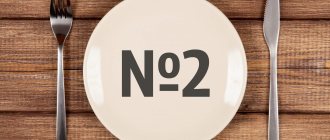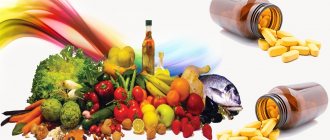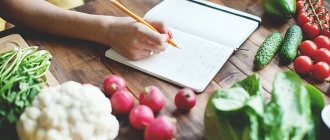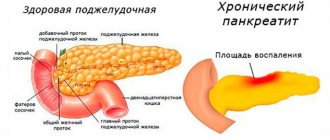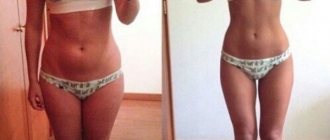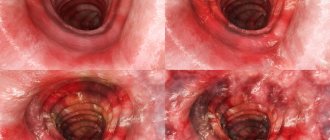A substance called gluten (synonym: gluten) has an important and controversial role in human nutrition. A complete absence of gluten in the diet can lead to deterioration of immunity and a decrease in the number of beneficial bacteria in the intestines.
If this substance is not tolerated by the body, or rather, cannot be properly broken down before entering the small intestine, the pathological condition of celiac disease, or gluten enteropathy, occurs with an inflammatory process in the small intestine.
The only scientifically proven treatment for this disease is a gluten-free diet. This is when gluten-free products are needed, which raise a lot of questions even among completely healthy people.
Gluten - what is it?
Gluten is found in wheat and barley.
Gluten is an organic biocompound (complex protein, protein) that is found in cereal plants such as wheat, rye, triticale, oats, and barley.
For example, in wheat the concentration of gluten can reach up to 80% of the weight of the grain. And the amount of gluten (or gluten) in flour indicates its quality.
If the flour has a sufficient amount of this substance, the elasticity and firmness of the dough made from such flour improves, and when the yeast produces CO2, the dough retains it and rises normally.
Since the properties of baked goods are determined by the presence of gluten in flour, it is often used as a filler for the manufacture of various products. With its help, you can improve the taste of the product, its aroma, structure (it becomes more delicate).
In what areas is cereal gluten used?
In wheat, 80% of the mass is gluten.
This substance is often used to prepare such food products as:
- Products containing meat - sausages, sausages and other sausages from a low price category;
- Bakery products - pasta, cereal, cookies, breakfast cereals, gingerbread, biscuits;
- Candies;
- Jams, halva, Turkish delight, marshmallows;
- Semi-finished products - cheesecakes, dumplings, cabbage rolls, cutlets, meatballs, dumplings;
- Products containing milk - yoghurts, cheese curds, condensed milk, packaged cottage cheese, ice cream, infant formula;
- Canned meat and fish;
- Products containing soy;
- Crab sticks;
- Blue cheese;
- Mustard;
- Baked goods – muffins, cakes, pancakes, pastries, pies, pizza, cookies;
- French fries, bouillon cubes;
- Ketchups and sauces;
- Mayonnaise;
- Several medications;
- Churchkhela;
- Vitamin and mineral supplements.
Nutrition tips for exacerbation of gastrointestinal diseases
Doctors recommend that in case of exacerbation of gastrointestinal diseases, eat small meals, reduce portions, and divide all daily meals into 4-5 meals.
- Food and drinks should not be too hot, because... Rough and hot food causes damage to the mucous membrane of the stomach and intestines. It is not recommended to drink cold drinks or eat chilled food.
- Chew food thoroughly.
- Cooking options include boiled, stewed and steamed. Meat and fish dishes should be cooked without skin and fat.
- First courses with vegetable broth.
- To prepare dishes, choose poultry, veal, beef, pork - only lean parts; low-fat fish (carp, sea bass, dorado, pollock).
- Reduce the consumption of heavy animal fats, they create conditions for food to remain in the stomach for a long time. Promote the reflux of gastric contents into the esophagus.
- Table salt is limited to 4-5 g per day.
- Among the spices, marjoram, vegetable mixtures, cinnamon, turmeric, bay leaf, dill, parsley, cumin, and fennel are allowed.
- It is advisable to consume cereals well boiled or pureed.
- Bread is preferably white, dried or yesterday's baked bread.
- Desserts allowed include mousses, marshmallows, jelly, baked fruit, and marmalade.
- Cottage cheese in the form of casseroles, souffles, parfaits. It is preferable to use homemade yogurt and kefir without fruit additives or flavorings.
- Limit light carbohydrates (sugar, confectionery, sweet pastries, honey), fast food, drink enough water, drink a glass of warm water in the morning on an empty stomach.
- Temporarily exclude raw vegetables, hard-skinned fruits, and sour berries from your diet.
- Strong black tea, coffee, freshly squeezed juices, and sour fruit drinks are excluded. Herbal teas from chamomile, immortelle, rose hips, mint will help improve the process of digesting food; consult your doctor before use.
- Spicy, fried, salty, sour, smoked, and canned foods are excluded. It is also important to exclude nuts, pastry, alcohol, and carbonated drinks during dietary treatment.
Despite the restrictions, the diet can be tasty and varied.
Food additives with gluten
There is a whole list of E-additives containing gluten: E150, c, b, d; E160; E411; E636; E471; E953; E637; E965.
Despite the fact that this protein is very often used to make any products, there are products that do not contain gluten. Such products can be identified by the label “hydrolyzed protein” or “modified starch”, which are often listed on packages.
These products can also be found in special health food stores, and more recently in supermarkets. It is worth noting that in high-level restaurants, gluten-free products are a mandatory part of the menu.
Complications of this disease
Headache as a symptom of celiac disease.
For the type of people who cannot digest gluten, a minimal dose of gluten can cause constipation or diarrhea.
Celiac disease itself can cause a whole list of complications, such as:
- Secondary osteoporosis;
- Chronic ulcerative enteritis;
- Tooth enamel is damaged;
- Headache;
- Joint pain;
- Liver disorders;
- Skin rash;
- Nausea;
- Dysfunction of the spleen;
- Fibromyalgia;
- Lymphoma;
- Inability to have children;
- Fast fatiguability;
- Convulsions;
- Lack of vitamins in the body;
- Rheumatoid arthritis;
- Pathology of the pancreas, gall bladder.
Having reviewed such a list of complications that celiac disease causes, it is not surprising that there are so many requests for information about which foods do not contain gluten.
Lactose-free nutrition
Indicated for congenital or acquired intolerance to milk sugar - lactose.
Lactose-containing
products are sometimes limited by a doctor during exacerbation of diseases of the pancreas, biliary tract, and intestines.
Lactose-free diet
involves avoiding whole milk and many fermented milk products. Moderately low-lactose and lactose-free hard cheeses, butter and melted butter (ghee), thermally processed curd products (casserole, cheesecakes prepared without frying) are allowed.
Celiac disease in children
According to statistics, 75% of children are diagnosed with celiac disease, and such children are obese or overweight.
This pathology is caused by digestive dysfunction. Symptoms of this disease vary depending on age. Infants develop intestinal flatulence, chronic diarrhea, severe abdominal pain, and rapid weight loss.
How to cure celiac disease?
Glutano products do not contain gluten.
If you or your child have been diagnosed with such an illness, this is not a reason to panic, because this disease can be cured without using medications.
The main and correct solution is to eliminate all gluten-containing foods from your diet. For your convenience, there are entire companies that produce gluten-free products, such as:
- Italian company - Dr. Shar;
- A company from Sweden – Finax;
- German company – Glutano;
- A company from Finland – Moilas.
It will also not be a problem to buy such products in Moscow, because in this regard this city is a leader compared to others. You can also order gluten-free products online or in specialty stores. It is worth noting that the prices for such products are higher than for regular ones, but for people with celiac disease there is no choice, either to cook everything at home.
Please note that all gluten-free products are labeled.
Menu for the week
A gluten-free diet can be varied. As evidence, it is worth considering a diet designed for 7 days.
Monday:
- Breakfast: tea, a little mashed potatoes and poached lean fish.
- Lunch: rice, steamed cutlets and broth.
- Afternoon snack: fruit salad.
- Dinner: fresh vegetables and buckwheat pudding.
Tuesday:
- Breakfast: tea, buckwheat porridge and some boiled meat.
- Lunch: fresh vegetables, light soup and fruit jelly.
- Afternoon snack: baked, peeled apple, preferably with the addition of nuts.
- Dinner: a glass of rose hip broth, rice and boiled meat.
Wednesday:
- Breakfast: cottage cheese, natural cocoa or tea, corn flakes.
- Lunch: fish soup or lean fish soup, some buckwheat, baked chicken fillet, a glass of black tea.
- Afternoon snack: rice cakes with homemade jam, a glass of unsweetened tea.
- Dinner: kefir, allowed bread, some vegetables.
Thursday:
- Breakfast: tea, cheese and omelet of 1-2 eggs, preferably steamed.
- Lunch: green apple and celery salad, chicken broth, glass of juice.
- Afternoon snack: compote and fruit jelly.
- Dinner: green tea, fresh or stewed vegetables, buckwheat pudding.
Friday:
- Breakfast: baked apple and cottage cheese with high calcium content, a glass of tea.
- Lunch: meat broth, 1-2 steamed cutlets, seasoned with milk sauce.
- Afternoon snack: some fresh fruit.
- Dinner: mashed potatoes, steamed fish cutlets, juice (preferably freshly squeezed).
Saturday:
- Breakfast: rice, a glass of weak coffee, poached fish.
- Lunch: baked vegetables, light broth with meatballs, a glass of tea.
- Afternoon snack: apple, nuts, gingerbread.
- Dinner: kefir, buckwheat porridge, boiled meat.
Sunday:
- Breakfast: juice or tea, cottage cheese and fresh fruit.
- Lunch: pilaf, juice, vegetable salad and light meat broth.
- Afternoon snack: fruit jelly.
- Dinner: tea, vegetables and buckwheat pudding.
Of course, this is an approximate menu for a gluten-free diet. There are many other options, and you can create your own diet - fortunately, there are many recipes. But even based on this example, it is realistic to understand that making your diet varied will not be difficult.
Gluten-free diet
Questions are often asked about what are the best foods to eat that do not contain gluten. Since the list is large, each person can independently choose the products that he likes to eat most.
If you decide to go on a gluten-free diet, you need to remember that such a diet should be varied; you do not need to limit yourself to 2-3 foods (for example, rice, potatoes and beets). Gluten-free foods are the mainstay of your diet, so be sure to eat fruits, fish, meat, eggs, oils, and vegetables.
Rice flour
Rice flour is an important ingredient in Indian and Japanese cuisine. Hindus bake bread, flat cakes and gingerbread. The Japanese not only bake, but also add flour to their famous rice ball desserts. Thoroughly rinse two cups of rice (both white and brown will do). Soak the rice for 3 hours. Place on a dry cloth for another 3 hours. Grind in a blender on maximum mode. Dry in a frying pan until the steam disappears. Sift through a sieve. Store in a dry place for up to 6 months.
Traditional Japanese dessert made from rice flour.
Gluten-free diet for children: recommendations for parents
To achieve the necessary positive results, you need to adhere to several rules:
- For the child, you need to select separate dishes and label them;
- It is necessary to determine a separate cabinet where exclusively gluten-free products will be stored;
- Wash your hands while preparing food;
- When trying foods, start with a dish that was prepared for a child;
- All prohibited products must be hidden away from the child;
- There is no need to give your child foods that cause you even the slightest doubt.
Find out which products do not contain gluten from the video:
Reviews
It’s worth telling about them finally. Having studied the reviews left about the gluten-free diet, you can see that people attribute the following nuances to its advantages:
- Quickly get rid of extra pounds.
- Quite a varied diet and a wide range of products.
- Cleansing the body of toxins.
- General improvement in condition.
- Skin cleansing.
But, of course, there are also disadvantages. Namely:
- The need to constantly replenish vitamin B, iron and fiber reserves.
- Mandatory control of product composition.
- Complete rejection of traditional sweets and flour products.
- Limited range of gluten-free products. Because of this, the time it takes to prepare dishes increases.
In general, the difficulties are all more psychological in nature. And they are relevant for people who decide to adhere to restrictions for their own interests, and not for the purpose of treatment. For patients with celiac disease, the diet is familiar.
List of foods that do not contain gluten
We present to your attention a list of the most popular gluten-free products. They can be consumed without fear by those people who have celiac disease (or celiac entropy).
- Fruits and vegetables;
- Oil - both vegetable and butter;
- Organic corn;
- Pure vanilla and vanilla extract;
- Eggs;
- Natural fish, dairy and meat products;
- Organic buckwheat;
- Rice;
- Potato;
- Maize;
- Spices and seasonings (natural);
- Millet;
- Arrowroot;
- Legumes - chickpeas, beans, beans, peas, soybeans, lentils;
- Nuts;
- Amaranth;
- Turkish peas;
- Tapioca;
- Quinoa;
- Sweet potato;
- Wild rice;
- Teff.
Cabbage soup
There are a few recipes worth considering. The gluten-free diet allows the consumption of soups, and one of the best is cabbage soup. Elementary preparation:
- Place chopped potatoes (3 pieces) into light meat broth (2 l). Cook for 10 minutes.
- Add cabbage, disassembled into inflorescences (10-15 pieces).
- Add grated carrots and onions (1 piece each).
- After 5 minutes, add 2-3 large chopped tomatoes.
- Finally, season with chopped garlic (2 cloves).
Serve with fresh herbs.
Is it possible to determine which foods do not contain gluten?
Capsule endoscopy can help diagnose celiac disease.
The presence of gluten in a product can be determined using one qualitative reaction, which will make it clear whether the product contains gluten or not.
Through many experiments, it has been proven that gluten, when interacting with an iodine solution, changes color and becomes black or purple. But there are two foods that are different from the others - potatoes and rice.
In such plants this protein is absent, but due to the fact that they contain starch, they also change color when interacting with iodine.
Liver pancakes
A very tender dish, allowed on a gluten-free diet. Even suitable for a child. Prepare as follows:
- Grind fresh liver (300 g) through a meat grinder.
- Add chopped onion (1 pc.), pre-fried in vegetable oil, to the minced meat.
- Add finely grated potatoes (1 tuber) there.
- Season with salt and pepper.
- Add 2 tbsp. l. corn flour, mix thoroughly.
- Spoon into a frying pan lightly greased with vegetable oil. Fry for 2 minutes on each side.
By the way, pancakes can also be baked in the oven.
